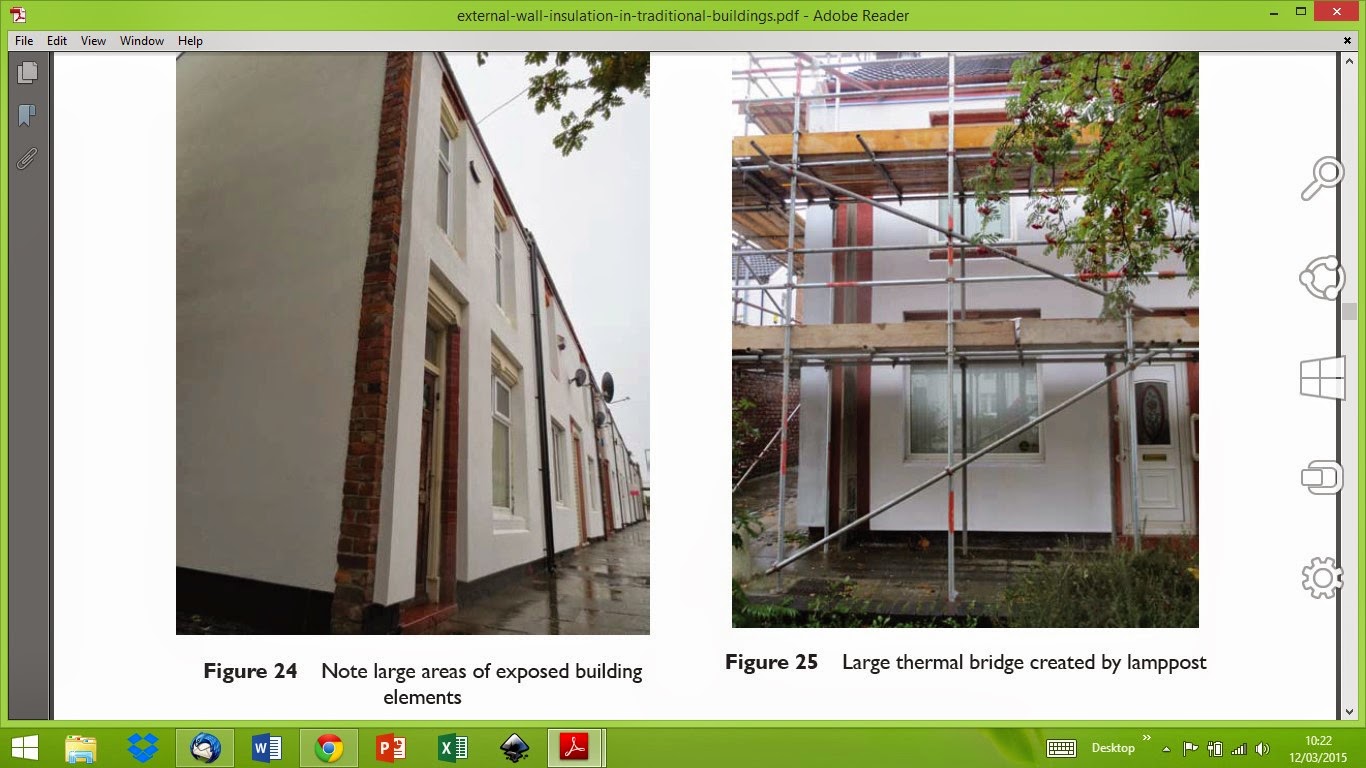| Online: | |
| Visits: | |
| Stories: |

| Story Views | |
| Now: | |
| Last Hour: | |
| Last 24 Hours: | |
| Total: | |
The failure of ECO
 |
| From Nick Heath / English Heritage report |
A great report by Nick Heath for English Heritage is available that looks in detail at the issues raised by large scale retrofit. There are a number of horror stories there waiting to happen, but at least Nick has managed to create a guidance tool for local authorities to help them get over the many issues associated with these large scale 'improvement' projects.
One of the main troubles with ECO funding for External Wall Insulation (EWI) is that they only cover insulation measures. Nothing else. This means that lots of practical issues are not addressed. For example in the picture the insulation could not be fitted behind a lamp post because there was no money to move the post. This meant that there is a huge thermal bridge in the wall. This then causes a range of problems with damp, condensation etc and also means that there is a large impact on the effectiveness of the insulation.
I was in the SE Wales valleys last year doing some training for CITB on pre 1919 buildings and the same was happening there. ECO would not pay for roofs to be extended to provide the required protection for the insulation. So instead the contractors were required to install some plastic caps over the insulation. This relies on mastic / silicon sealant to provide long term protection from water ingress. The insulation system is therefore not guaranteed as it is not fitted to the manufacturers specification. The caps were supplied by other people and so there is a huge issue of future responsibilities when the water gets behind the insulation.
I feel sorry for the organisations installing ECO as they want to do a good job, but the ECO funding means that they just don't have the resources to do it properly. Of course the owners of the houses could pay for the work, but the whole idea behind ECO is that it is for those people who are disadvantaged and hence don't have the thousands of £s required to make up the shortfall.
One gets the feeling that many of these large scale EWI will fail and then cost an arm and a leg to put right. So in our drive to save carbon we are in fact probably going to end up having to pollute more. What a shame.
There are ways of doing this work at a lower risk, but it does cost more and requires a more skilled workforce. In the end, though, it would save more money, but the systems that the industry is forced to work to means that this will not happen. We will continue to have schemes that are underfunded, ill specified, done poorly (due to inadequate underpinning knowledge of materials and thermal dynamics) and also done at the wrong time of the year (most of the ECO work is done between November and March due to funding requirements).
A tad depressing, but I think that we need to know the issues so that we can try to ensure that we stop making the same old mistakes.
Eco Home DIY Advice blog is brought to you by Eco Home Centre (http://www.ecohomecentre.co.uk) a not-for-profit organisation in Wales, UK. The Blog can be found at http://ecohomecentre.blogspot.com
Source: http://ecohomecentre.blogspot.com/2015/03/the-failure-of-eco.html



